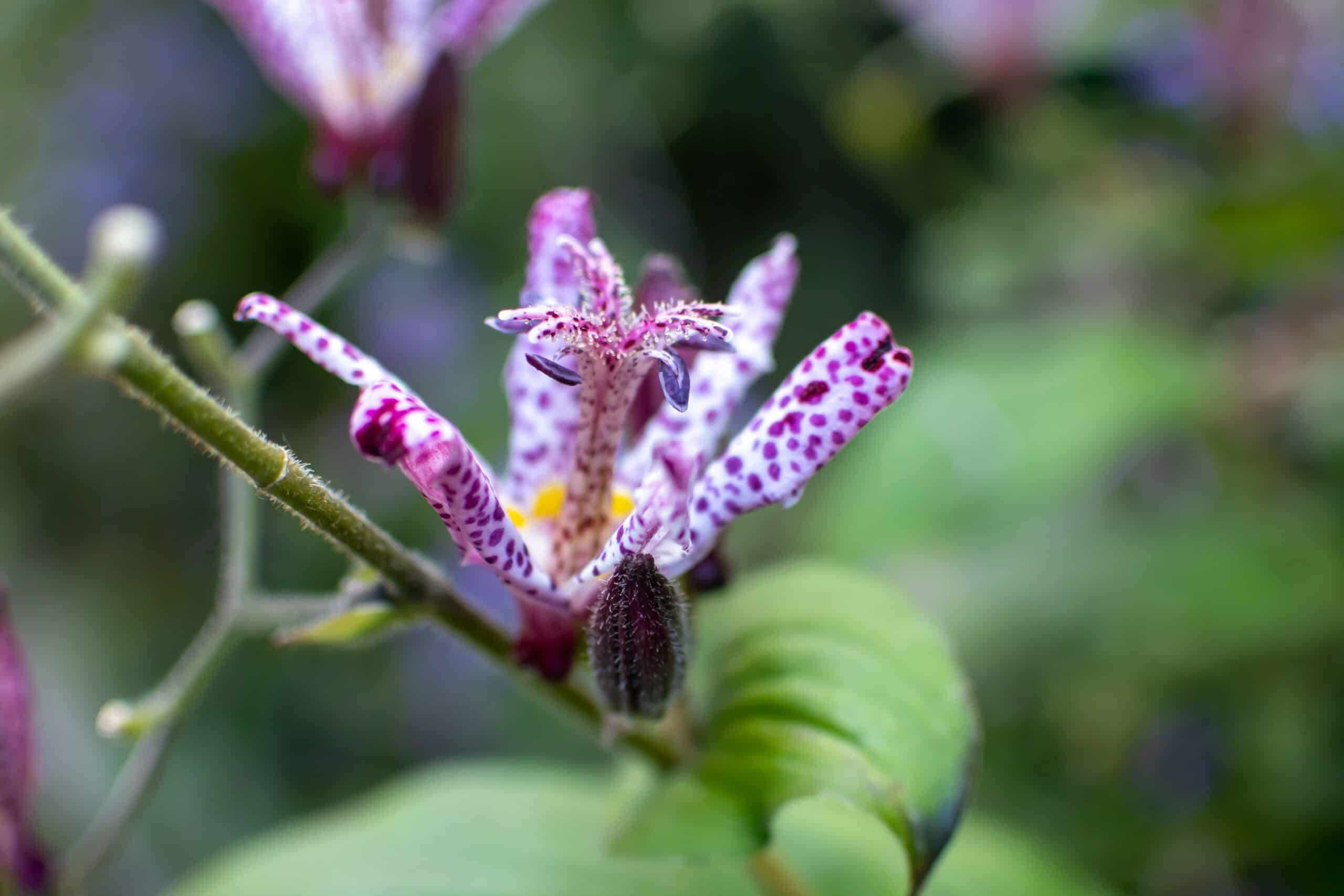The Japanese Iris is one of the most popular flowers in the world, with an estimated 54 million cultivated for consumption each year. This beautiful flower has a long history, being originally found in Japan and then brought to other parts of the world by botanists and gardeners alike. With its vibrant colors and unique shape, it’s no wonder why this flower has become so popular across the globe. As a specialist in botany and gardening, I’m here to tell you all about how to grow and care for Japanese Iris so that they can thrive in your garden!
Captivatingly beautiful yet surprisingly easy to maintain, Japanese Iris grows best when planted between late spring and early summer. When planted correctly, these stunning flowers will give off a wonderful scent that will fill your garden with life and beauty all season long. With their distinctive drooping petals and range of colors from purple to yellow, these delicate blooms will be sure to add a splash of vibrancy to any outdoor space!
In order to ensure that your Japanese Iris are healthy and happy throughout their lifecycle, there are certain steps that must be followed when planting and caring for them. In this article, I’ll provide all the information you need on how to grow and care for Japanese Iris so that you can have a flourishing garden full of these spectacular flowers!
What Is A Japanese Iris?
The Japanese iris is a thing of beauty, its delicate petals seemingly carved from porcelain and its fragrance a gentle reminder of summer days. It’s no wonder then that this plant has become so popular in the gardening community, with its ease of care and ability to thrive in many climates. But before one can begin to enjoy the beauty of the Japanese iris, it is important to understand what it is and how best to care for it.
The Japanese iris is a member of the Iris family, and is native to Japan, Korea and China. It grows from rhizomes – an underground stem that stores nutrients until they are ready for use – and produces flowers with six petals that can range in color from white to blue-violet or even yellow. The foliage is sword-shaped, with long stems often reaching up to three feet in height.
When caring for these plants, it is important to remember that they prefer moist but well-drained soils; too much water can lead to rotting of their rhizomes. They thrive in full sun but benefit from partial shade during hot summer months as well as protection from strong winds. Pruning should also be done after flowering has finished – deadheading will encourage rebloom later on in the season. With proper care and attention, these lovely plants will reward you with years of beautiful blooms!
Where Do Japanese Irises Grow Best?
Japanese iris, also known as ‘Kakitsubata’ in Japan, is a beautiful flower found mainly in the temperate climate of Asia and Europe. Interestingly, these flowers can grow up to 2 feet in height and provide a magnificent array of colors from deep purple to white.
When it comes to growing Japanese irises, location is key for success. These flowers grow best in moist environments with plenty of sun exposure, such as near ponds or streams. An ideal location should have morning sunlight but be sheltered from harsh afternoon sunlight and wind. Additionally, soil drainage should be excellent with a pH level between 6-7 for optimal growth.
In order for the plant to thrive, regular care must be taken into account. Feeding and watering must occur weekly during the growing season with extra attention being given during hot spells. If the soil becomes too dry or soggy, this can lead to root rot which will significantly reduce the life of your Japanese iris. With proper care and maintenance, these gorgeous flowers can truly bring any garden to life!
How To Plant Japanese Irises
Japanese irises are an eye-catching addition to any garden. Their tall, graceful blooms and lush foliage can bring a touch of the Orient to your outdoor space. Planting Japanese irises is relatively easy, and with the right preparation you can have a stunning display in no time.
When planting Japanese irises, you should first pick a spot that will get plenty of sun throughout the day. Choose an area that has well-draining soil to prevent the roots from sitting in water and rotting away. Make sure there is ample room for the plants to spread out, as Japanese irises need at least 12 inches between each one.
Once you have chosen your location, dig a hole about three times as wide as the rootball of the plant and just deep enough so that it sits level with the surrounding ground. Gently loosen up any tangled roots or broken stems before placing them in their new home. Fill in around them with soil and give them a thorough watering. This helps settle all of the soil around them and gives them a good start in their new environment.
Now that your Japanese iris is planted, it’s time to turn your attention to caring for it properly so it will thrive year after year!
Caring For Japanese Irises
Caring for Japanese irises is an important part of successful gardening. Planting them correctly and providing the necessary environment are critical to their health and longevity. This includes proper watering, fertilization, and light requirements. Let’s take a closer look at each of these components.
Watering is essential for healthy Japanese irises. During their active growth season in spring, they need an inch of water per week. In summer, when it’s hot and dry, you may need to increase the amount of water to two inches per week or more if needed. When autumn comes around and temperatures drop, reduce your watering frequency accordingly. Make sure that you don’t overwater as too much can cause root rot or stem diseases.
Fertilizing Japanese irises is also important for their health and growth. Feed them with a balanced fertilizer during the active growth season in the springtime at least once every month or two months depending on soil fertility levels. Additionally, make sure to add compost or manure around the plants to help replenish the soil with nutrients each year before new growth starts appearing in springtime.
When it comes to sunlight requirements for Japanese irises, they do best in full sun but can also tolerate some light shade throughout the day. If planted in a too-shady area however, they won’t bloom as much or as well as those planted in sunnier spots. Aim for 6-8 hours of direct sunlight each day during their growing season for optimal blooming performance! Moving onto sun requirements for japanese irises…
Sun Requirements For Japanese Irises
Japanese irises thrive in the right amount of sunlight, making it key to successful growing and care. When it comes to sun exposure, an interesting statistic is that Japanese iris plants require at least six hours of direct sunlight a day to produce their best blooms. This is especially true during the summer months when they are actively flowering. As such, take into account the location and time of year when choosing where to plant your Japanese irises.
When selecting a spot for your Japanese iris plants, look for an area that receives plenty of morning sun and is shielded from harsh afternoon rays. While some cultivars can tolerate more intense sunlight, most varieties prefer partial shade during the hottest part of the day. During winter months, try to choose a location that receives enough light for proper growth without too much wind exposure as this may damage their leaves.
In addition to providing adequate light levels, be sure to water your plants regularly throughout the growing season to ensure optimal health and bloom production. Keep an eye on soil moisture levels and monitor them closely as too much or too little water can both cause harm to these delicate flowers. With a bit of care and attention, you’ll find yourself with stunning Japanese iris blooms ready for display in no time at all!
Optimal Soil For Japanese Irises
When it comes to growing Japanese irises, the soil is of paramount importance. It can either contribute to their success or spell disaster for them. It is, therefore, important to consider the optimal soil for these plants and how you can ensure that they thrive in your garden.
As a botanist and gardener, I have observed that Japanese irises prefer moist but well-draining soils with a pH of 6.5-7.0. The ideal soil should be loamy with some organic matter so as to provide adequate moisture retention without becoming waterlogged and soggy. Here are some key points to remember when it comes to the optimal soil for Japanese irises:
• Good drainage is essential – We want the soil to stay moist without becoming waterlogged and soggy, which can lead to root rot. • Add compost or aged manure – Composted material helps improve the structure of heavier soils and adds beneficial nutrients that help keep your plants healthy and vibrant. • Amend clay soils – If you have heavy clay soils, adding compost or aged manure will help loosen them up and allow better drainage while improving aeration levels at the same time. • Use raised beds – If you have an area where drainage is poor, consider building raised beds for your Japanese irises as this will provide better drainage and also enable you to control the type of soil used more closely. • Incorporate sand into sandy soils – Sandy soils are often low in nutrients so adding some sand will help retain moisture and improve nutrient availability for your plants.
Taking all these factors into account when choosing a location for your Japanese iris will help you get the best results from these beautiful flowers in your garden. Moving on from this, let’s discuss the water needs of these plants next…
Water Needs Of Japanese Irises
Japanese irises are some of the most beautiful flowers that can be found in gardens. As with any other flower, they require dedicated care and attention to flourish. According to research, approximately 4 hours of direct sunlight per day is optimal for their growth. In addition to this, it’s important to understand their water needs.
Firstly, Japanese irises prefer damp soils; however, they do not tolerate standing water. During summertime, temperatures tend to rise and soil dries out faster than usual. To prevent this from happening, a thorough watering throughout the season is necessary for optimal health and bloom quality. With that said, over-watering may cause root rot and other diseases due to too much moisture in the soil.
Therefore, it’s important to check the moisture levels regularly by sticking your finger into the ground about 3 inches deep. This will give you an idea of how dry or wet the soil is at any given time. If it feels dry near the top layers but wet further down then watering may not be necessary yet – allowing you some insight as to when irrigation should take place. Additionally, adding a layer of mulch around plants helps keep moisture in during hot days while also keeping weeds away from them which can steal essential nutrients from the soil.
By understanding these water requirements and properly applying them in your garden, you can help ensure that your Japanese irises will thrive throughout the growing season and provide stunning blooms that last all summer long!
Fertilizing Japanese Irises
Japanese irises are attractive, hardy plants that require proper care to thrive. Fertilizing them is an important part of their maintenance and should not be overlooked. An effective fertilizer will contain a balanced ratio of nitrogen, phosphorus, and potassium (NPK). These nutrients are essential for healthy root growth, bloom production, and the overall health of the plant.
The best way to fertilize Japanese irises is with a slow-release fertilizer applied in early spring before new growth begins. This will provide necessary nutrients throughout the growing season without burning the plant or encouraging explosive growth. Additionally, liquid fertilizers can also be used every few weeks during active growth periods. When applying liquid fertilizers, be sure to water after application to prevent any potential burning from the concentrated formula.
Finally, it’s vital to monitor soil nutrient levels regularly and adjust accordingly. If too much NPK is present in the soil it can cause root damage; if there isn’t enough available nutrition then blooms may suffer or fail entirely. With adequate care and attention your Japanese iris will flourish for many years to come! As we move onto propagating these beauties let’s take a look at how this process works…
Propagating Japanese Irises
Propagating Japanese irises is a great way to expand your collection of these beautiful plants. It can also be used as an inexpensive and easy way to share them with friends, family, or other gardeners in the area.
The process of propagating Japanese irises is very simple, and it involves dividing the rhizomes into smaller pieces. Each segment should have at least three fans of leaves and a healthy root system. The best time to divide the rhizomes is in the early spring when they begin to sprout new growths. Be sure to give each piece adequate space as they can quickly fill up an area if crowded together. After dividing the rhizomes, planting them in well-draining soil will ensure that they get enough light and air circulation for optimal growth.
When planted correctly, these divisions will typically bloom within two years after propagation. With careful maintenance and attention, you can enjoy many years of vibrant blooms from your Japanese iris plants! Additionally, it’s important to monitor for pests or diseases that may affect your plants’ health, as this could reduce their flowering performance or lead to plant death if left unchecked.
Controlling Pests And Diseases
Plants often succumb to pests and diseases, but with proper care and attention, Japanese Iris can be kept healthy and vibrant. Blight, rust, leaf spots, and aphids can all be prevented with meticulous maintenance. Careful monitoring of the plants’ environment is key in keeping them healthy. By evaluating the soil quality, water levels, and amount of sunlight your irises receive you can ensure their longevity.
To keep your Japanese Iris free from disease or pest infestations look for signs of wilting leaves or discoloration on the foliage. Once noticed you should take action promptly by removing any affected leaves or blooms from the plant to prevent further spread. Additionally, it’s important to practice good sanitation habits around the iris patch; make sure to remove any fallen leaves or debris as soon as possible so that pests don’t have an opportunity to take residence in your garden.
The right preventive measures when caring for Japanese Iris will help keep them looking beautiful for years to come. With consistent upkeep including regular pruning and fertilizing, your irises will thrive with minimal effort on your part. By taking the time to practice these preventative steps you can rest assured that your garden will remain healthy and picturesque well into the future.
Deadheading Japanese Irises
Deadheading Japanese irises is an important part of their care. This process helps to keep the blooms looking neat, tidy and healthy. It also encourages more growth from the same plant, so it’s worth doing! To deadhead a Japanese Iris, simply remove any spent blooms with a pair of garden clippers or scissors. Be sure to cut back to where the flower stem meets the main stem at the base of the plant.
It’s also important to watch out for pests and diseases. These can affect any type of plant – even those that are well cared for – so it pays to be vigilant! Look out for signs such as discolored foliage, wilted leaves, or insects on the flowers or stems. If you spot anything like this, take action quickly by using an appropriate treatment such as insecticides or fungicides.
When it comes to winter care, Japanese Irises don’t require much maintenance apart from some basic tidying up. Cut back any dead foliage after flowering has finished in autumn and mulch around plants in late autumn or winter with well-rotted manure or composted bark chips. This will help protect them from cold temperatures and give them nutrients come springtime when they start growing again! TIP: Make sure to check your plants regularly during winter months for signs of frost damage, as this can harm their health if left untreated.
Winter Care Of Japanese Irises
Japanese irises are a beautiful and versatile flower that can be grown as both a garden plant and a container plant. For example, Mrs. Mori in Tokyo was able to successfully grow Japanese irises in her balcony’s pots, which she started from tiny rhizomes. In order to keep these delicate plants healthy, proper winter care is essential.
As the temperatures begin to drop, it is important to give your Japanese irises an extra layer of protection against the cold by mulching them with straw or hay. This will help insulate the roots while also creating a more comfortable environment for the plants during their dormancy period. Additionally, if there is heavy snowfall in your area it is recommended that you cover your Japanese irises with burlap so they don’t get crushed by the weight of the snow.
When preparing for winter care it’s also important to consider any potential pests or diseases that may affect your Japanese irises over the colder months. One of the most common diseases affecting these plants is Iris borers which can cause significant damage if left unchecked. To prevent this from happening, inspect your plants regularly throughout the winter season and treat accordingly if needed with an appropriate insecticide or fungicide product.
With careful preparation and regular maintenance, you can ensure that your Japanese irises will remain healthy year-round and continue providing you with gorgeous blooms each spring!
Tips For Growing Japanese Irises
Japanese irises, or ‘Iris ensata’, are a beautiful and popular addition to any garden. With their distinctive blue, purple and white blooms, they are sure to add a splash of color. To successfully grow Japanese irises in your garden, there are some specific tips you should follow.
Firstly, when planting Japanese irises, it is important to select a sunny location which gets at least 6 hours of direct sunlight per day. Furthermore, for optimal growth and flowering potential, the soil should be rich in organic matter and well-draining. It is also essential to select an area that does not get too wet during winter months as this could cause the roots to rot.
When caring for Japanese iris plants throughout the year, regular watering is necessary but avoid over-watering as this could lead to root rot. Additionally, fertilizing regularly with a balanced fertilizer will help promote healthy growth and abundant blooms. Pruning is also recommended to keep the plant looking neat and healthy; however, do not prune before late spring or early summer as this can affect flower production in the following year. TIP: When planting Japanese irises make sure that you space them out far enough so that the plants have ample room for air circulation around them – this will help reduce disease problems such as powdery mildew.
Common Problems Of Japanese Irises
Japanese irises are a beautiful and popular perennial flower with an eye-catching form. While these flowers can do well in a garden or container, they may also come with some common problems. It is important to recognize and address these issues in order to ensure that your plants remain healthy and vibrant for years to come.
The most common problem with Japanese irises is rot. Rot can occur when the soil is too wet or if there is not enough drainage in the area. The best way to prevent rot from occurring is by keeping the soil moist without soaking it, as well as providing adequate drainage around the roots of your plants. Additionally, make sure to remove any dead foliage or stems from the plant as this can contribute to rot growth.
Additionally, Japanese iris may be prone to pests such as aphids and slugs. Regularly checking your plants for signs of infestation can help you catch them early on and treat them with appropriate insecticides before they cause serious damage. Finally, while Japanese iris are fairly hardy, they will still suffer in extreme temperatures and environmental conditions such as drought or flooding. Ensure that your plants are getting enough water during dry spells and that they are planted in areas with full sun exposure and good air circulation for optimal health. Moving forward, let’s take a look at when it’s time to divide Japanese irises.
When To Divide Japanese Irises
Gardening can be an immensely satisfying activity. It can bring people closer to nature, and enhance their lives with its beauty and fragrance. One of the most beloved flowers in gardens around the world is the Japanese Iris. These lovely plants require some special care in order to grow and thrive. Knowing when to divide them is key to achieving success with this species.
The Japanese Iris is a resilient flower that will often reward gardeners who are willing to invest a little extra effort in caring for it. As it matures, it will become crowded and may need to be divided so as not to hinder its growth potential. Generally speaking, Japanese Irises should be divided every three or four years in spring or early fall, depending on your climate zone. It’s important to wait until after they’ve finished flowering before dividing them, as this will help ensure maximum blooms the following year.
When dividing, use sharp shears or a spade to separate the rhizomes into manageable pieces making sure each section has at least one healthy fan of foliage on it. Replant these sections as soon as possible and water them thoroughly to give them the best chance of becoming established. With a little knowledge and dedication you can enjoy beautiful Japanese Irises for years to come!
Frequently Asked Questions
How Long Does It Take For Japanese Irises To Reach Maturity?
Japanese irises, or more commonly known as Japanese water iris, are stunning aquatic plants, which can be grown with relatively little effort. As a versatile species, they’re well suited for growing in the garden, in ponds and even indoors. But an important question to consider is: how long does it take for them to reach maturity?
When given the right conditions, Japanese irises can reach maturity fairly quickly. Under optimal growing conditions, they may take as little as two years to reach full bloom. However, if planted in less than ideal conditions, such as when not provided with adequate soil nutrients or sunlight exposure, their growth rate will be slower and it may take up to four years before they reach maturity.
Whatever the case may be, patience is key when it comes to caring for these plants. To ensure your Japanese iris reaches its full potential and blooms abundantly each year it’s important to provide them with the necessary nutrients and sunlight that they need from the start. With proper care and attention you can enjoy watching them mature into beautiful specimens of vibrant color that will bring life and joy to your garden for many years to come!
Are Japanese Irises Suitable For Container Growing?
Japanese Iris, scientifically known as Iris ensata, is an exquisite flower with many different varieties. It can reach heights of up to three feet and has a lifespan of four to five years. As such, these plants are well suited for container gardening – in fact, the Japaneses have been growing them in containers for centuries.
Japanese irises have several distinct advantages when grown in containers. First and foremost, these flowers require minimal upkeep: they only need to be watered once or twice each month during their active growth season (Spring-Summer). Additionally, they thrive in bright sunlight and prefer moist soil that drains well. Furthermore, the size of their root system means they can also be planted directly into a pot without needing to be transplanted within a few months – making it much easier for gardeners who don’t have much space or the time to do so.
Another great advantage of container-grown Japanese iris is that they can easily be transported from one location to another – perfect for those who want to add a touch of beauty to their outdoor spaces but don’t necessarily have the room for a full garden bed. Plus, if you live in an area with changing weather patterns or chilly winters, you can move them indoors before temperatures drop too low.
No matter where you decide to place your Japanese irises, it’s important to remember that good drainage is key for optimal health and growth. For this reason, make sure the potting soil you choose is light and porous enough for water to move freely through it; otherwise you risk overwatering your plants and inviting disease and pests into your garden!
Can Japanese Irises Be Grown From Seed?
Growing Japanese iris from seed is like playing a game of cards – you never know what the outcome will be! The results could be rewarding, or you could end up with a less than desirable bunch of flowers. Here’s how to give it your best shot:
- Collect the seeds from the flowerheads of the Japanese iris plants once they have fully dried out.
- Plant them in small pots and keep them indoors until they germinate, which usually takes between two and four weeks.
- When they sprout, transfer them to larger pots and place them outdoors in an area that receives filtered sunlight throughout the day.
- Water your Japanese iris regularly, but make sure not to overwater as this can lead to root rot.
For those passionate about botany and gardening, growing Japanese iris from seed is a great way to become familiar with their characteristics and behaviors. There are some things you should keep in mind while planting seeds such as making sure they receive adequate sunlight and water, but overall, this process is relatively straightforward compared to other types of flower propagation methods. As long as you take proper care of your plants, you’ll likely find yourself rewarded with beautiful blooms each year.
How Often Should Japanese Irises Be Watered?
Caring for Japanese irises requires a careful balance of watering and fertilizing. Figuratively speaking, they need just the right amount of attention to flourish in your garden. With these tips, you can keep your Japanese iris blooming beautifully all season long.
Watering is the most important aspect of growing Japanese irises. They should be watered at least once every week, preferably twice or more if the weather is very hot or dry. During periods of heavy rain or when it’s extremely hot and dry, they may need to be watered even more often. It’s also important to give them a deep watering rather than frequent light sprinklings, as this will help encourage healthy root growth.
Japanese irises are also sensitive to too much fertilizer, so it’s best to use a low-nitrogen fertilizer that is designed specifically for flowering plants. To avoid overfertilizing your Japanese iris, use only half the recommended dosage and spread the fertilizer evenly around the base of the plant without making contact with its foliage. After fertilizing, make sure to water deeply so that the nutrients can reach the roots and not get washed away by rain or irrigation.
By providing adequate water and fertilizer in moderation, you can ensure your Japanese iris has all it needs to thrive in your garden and bring beauty throughout the growing season.
Are Japanese Irises Deer Resistant?
When it comes to deer resistant plants, Japanese Iris is a great option for gardeners. Deer tend to be cautious of plants with strong scents and the Japanese Iris certainly fits the bill. Its thick foliage and stems also make it difficult for deer to get at the succulent parts of the plant.
That said, there are some steps you should take to keep deer away from your precious Iris. First, you should use deer deterrents such as cayenne pepper or predator urine around the perimeter of your garden. Additionally, you can try planting other species of plants that deer don’t like near your Japanese irises. This will give them an additional layer of protection and help keep them safe from hungry deer.
Finally, you can use fencing or netting around your Japanese iris bed if necessary. This is especially helpful if you have a large population of deer in your area or if they’re particularly persistent. With these simple steps, you can ensure that your Japanese irises stay safe and flourish in your garden for many years to come!
Conclusion
It is clear that Japanese Irises are a beautiful and versatile addition to any garden. With their tall stems, graceful blooms, and lush green foliage, they can provide an eye-catching focal point in any landscape. Growing and caring for these exquisite flowers is relatively straightforward, as long as you understand their basic needs. It typically takes two to three years for Japanese Irises to reach maturity, but they can be grown from seed or in containers with appropriate care. They should be watered regularly and kept free from pests and deer.
One statistic that stands out from the research on Japanese Irises is that one plant may produce up to 50 flowers per season! This makes them an excellent choice for gardeners looking for a stunning display of blooms without having to invest too much time or money into their upkeep.
In conclusion, Japanese Irises make wonderful additions to gardens due to their ease of care and abundance of flowers. With the right amount of water, sunlight, and occasional pruning, you can enjoy these magnificent plants for many seasons to come.





























